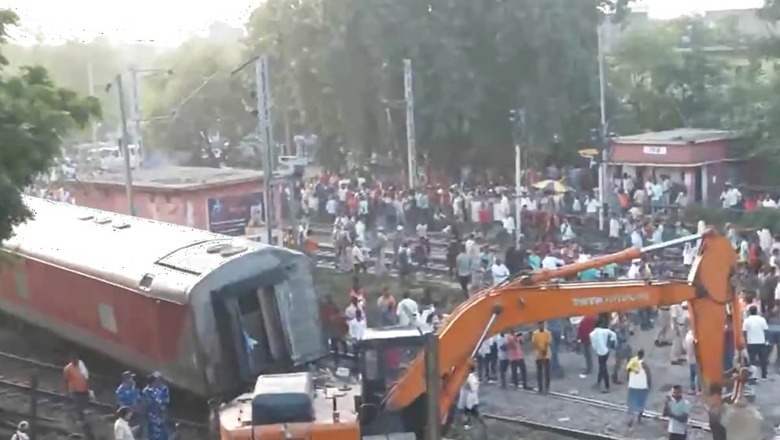
views
A possible “fault in tracks” could be the cause of the train accident in Bihar’s Buxar as per a preliminary probe. A high-level inquiry has been ordered into the accident, in which all 23 coaches and the engine of the North East Express derailed killing four people and leaving several injured near Raghunathpur railway station late on Wednesday (October 11). Rail ministry officials, however, refrained from making any comment on the document citing an ongoing investigation.
According to sources, ground officers in the “joint note” have suggested that the accident happened because of a possible “fault in tracks”. A ‘joint note’ is basically a report prepared by officers from different departments who first visit the site after any accident.
‘Sudden heavy vibration, drop in engine pressure’
This report, exclusively accessed by CNN-News18, also has an account of the accident as described by the loco pilot. It has been signed by the traffic inspector, loco inspector, section engineer among others while giving information on the situation after the accident and even highlighting minute details such as the speedometer was stuck at 112 kmph due to damage to the battery box.
According to the observations in the document, the gateman at the level crossing confirmed in his statement that eight to 10 coaches of the train passed as usual. But, after that, he noticed “sparking and heard a loud noise”. The train’s loco pilot recounted a similar story, describing “sudden heavy vibration and drop in engine pressure”.
The signal is a crucial aspect, and the statement of the on-duty station master in the document suggests that the signal was set for the mainline. Officials have also detailed factual aspects of the accident, noting that out of 23 coaches, two were completely capsized while the third was partially turned. The report states, “All 23 coaches, including the engine, derailed with all wheels.”
According to sources, the breath analyser test of both the loco pilots and assistant loco pilot is negative. A detailed investigation will lead to details if there was any tampering with the tracks, they added.
Officials asked for an official statement refused to comment on the document. A senior ministry official said, “The document cannot be considered the final outcome of the investigation. It is just a part of the ongoing investigation…”
In the Balasore triple train crash, the notations by officials in the joint note were later relied upon for the investigation. In this case, while the investigation is still ongoing, the document suggests that the engineering department is prima facie responsible for the accident as it is in charge of track maintenance.
‘First priority to clear the tracks’
East Central Railway general manager Tarun Prakash, who was in Raghunathpur to supervise the restoration works, said the first priority is to clear the tracks. He said the cause of the accident will be known only after the investigation is complete.
“…The cause of the derailment will be known only after a proper investigation. At present, our priority is to clear the tracks. Until normal traffic is restored, trains running on the route will be diverted,” Prakash said.
Officials said electric wires, poles and tracks have been damaged due to the accident, adding that 21 trains operating on the route have been diverted as a result.
At least 1,500 people boarded the train when it started from Anand Vihar in Delhi. Of them, 1,006 people boarded a relief train from Danapur at 5 am to reach their destinations in Bihar, West Bengal and Assam. The number of passengers is high as those having partial tickets or were on the waitlist also boarded. The relief train will reach Kamakhya in Guwahati around 11 pm.
Apart from Delhi, the superfast and passenger-heavy train traverses the four states of Uttar Pradesh, Bihar, West Bengal and Assam on a daily basis. It has 28 stops on the route, including major stations like Kanpur, Allahabad, Mughalsarai, Patna, Jalpaiguri among others. It covers a distance of 1,856 km in a little over 33 hours.




















Comments
0 comment